- Z-POSTS (29)
- Z-NOTES
- Z-EVENTS
- DESCRIPTION
- Item 1
25 HR and organization
Add Z-POSTZ-POSTS is a public space. The content written here will be visible to the ZVENIA community.
 Sebastian Ramirez Perez14/05/2024
Sebastian Ramirez Perez14/05/2024 Sebastian Ramirez Perez13/05/2024
Sebastian Ramirez Perez13/05/2024In the journey toward achieving our goals, motivation often gets the spotlight. It’s the spark that ignites our initial enthusiasm, the burst of energy that gets us started. But what happens when that spark fades?
This is where discipline – the less glamorous, but infinitely more powerful force – takes center stage.
Discipline vs. Motivation: Motivation is fleeting; it’s based on emotions that can fluctuate daily. Discipline, on the other hand, is about commitment. It’s the structured approach to making progress, regardless of how we feel.
The Power of Habit: Discipline transforms actions into habits. While motivation can kickstart a routine, discipline cements it into our daily lives, making excellence not an act, but a habit.
Consistency Leads to Results: The magic of discipline lies in its ability to help us maintain consistency. Achievements are not the result of sporadic efforts fueled by momentary inspiration but of consistent action, day in and day out.
Building Resilience: Discipline builds resilience. It teaches us to push through adversity, to keep going when motivation has long left the building. This resilience is what separates the successful from the rest.
How to Cultivate Discipline:
Set Clear Goals: Know exactly what you’re working toward.
Establish Routines: Create a daily structure that aligns with your goals.
Monitor Progress: Keep track of your actions and outcomes.
Stay Accountable: Find a mentor, coach, or community that supports your journey.
Reward Progress: Celebrate the small wins to maintain momentum.In conclusion, while motivation is the spark, discipline is the fuel that keeps the fire burning. Let’s shift our focus from seeking perpetual motivation to cultivating unwavering discipline.
Here’s to achieving our goals through the power of disciplined action! 🌟📘
ZVENIA Mining .29/03/2024Culture is an output, not an input.
Focus on these 10 “ingredients” and great culture will follow:
Credits to Scot Chisholm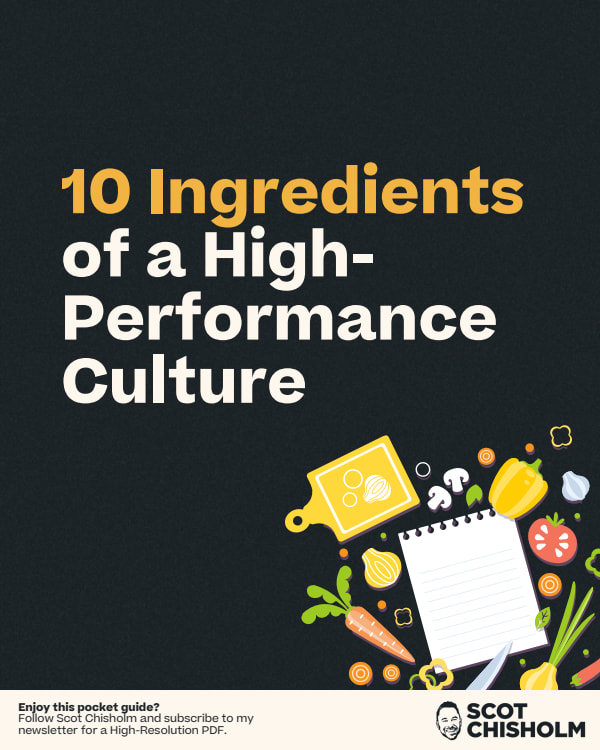 ZVENIA Mining .27/03/2024
ZVENIA Mining .27/03/2024Shout out to one of our amazing clients TestGorilla for the important work they do in building progressive teams.
Their product helps remove bias from hiring decisions by looking past the CV and assessing the actual qualities of the individual in a fairer, more objective way.
The facts on skills-based hiring tell their own story:
✅ 92% of employers believe it is more effective than CVs for identifying talented candidates.
✅ 89% believe it is more predictive of success in the role.
✅ 82% believe employees hired via skills-based hiring stay longer in their roles.
Nearly every company I speak with talks about promoting diversity and hiring great talent, but too many are found wanting when I ask, “okay great, how are you doing that?”.
Source: Ross Johnston
Credits to testGorilla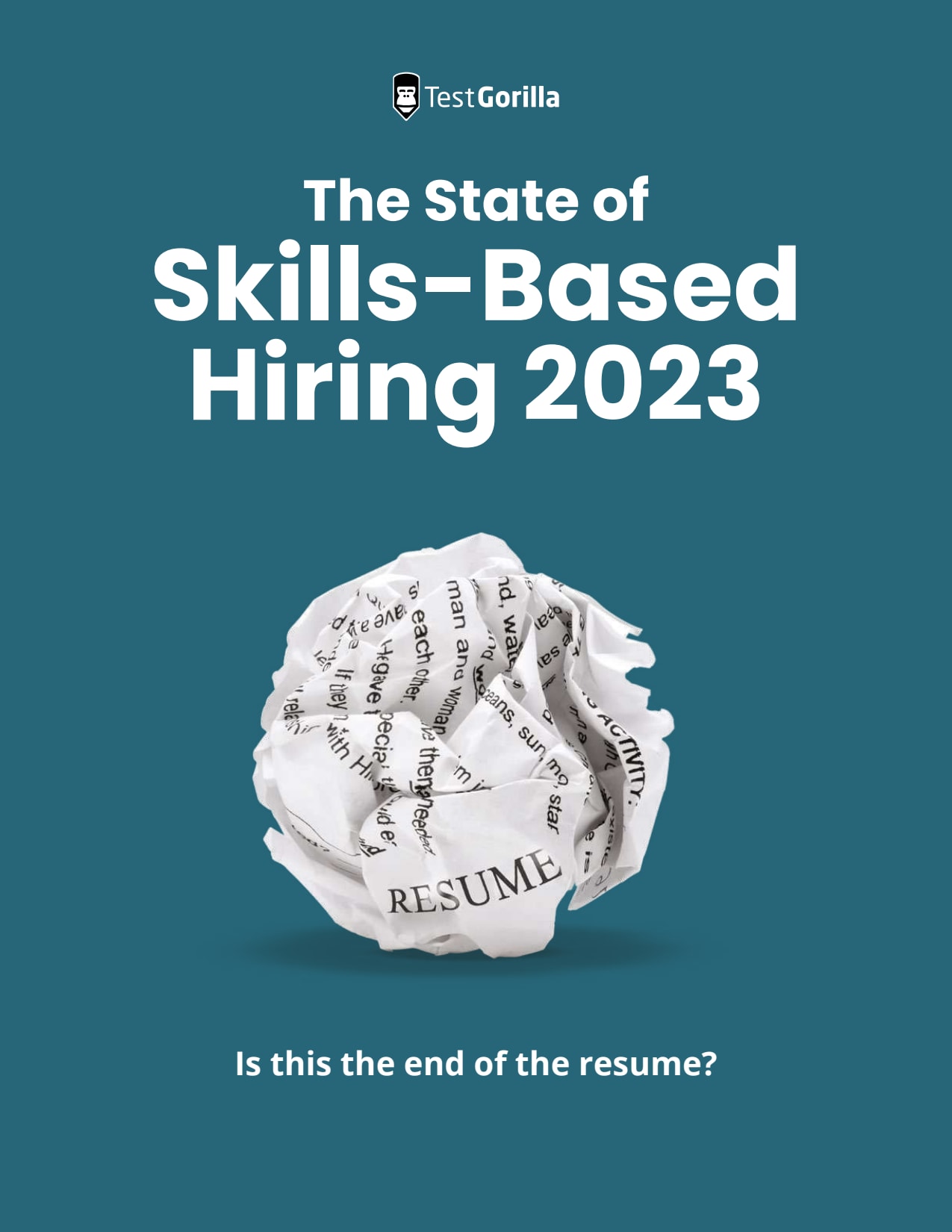 ZVENIA Mining .22/03/2024
ZVENIA Mining .22/03/2024Here’s the original post:
You know them: colleagues in a meeting who don’t really add anything. Or worse, who disturb your meeting through their toxic presence. Avoid these four types.
My general attitude toward people is very positive. I always assume people want the best, not just for themselves but also for others and their organizations. And also that they do their best to achieve this.
This works most of the time, but sometimes I get disappointed by people that don’t live up this expectation. Through their presence, they add negativity to a meeting, process or collaboration.
Originally known as “the dangerous animals of product management,” there are four types of such people: the Zebra, the Hippo, the Wolf and the Rhino. This is what they mean and how to deal with them in your strategy meetings:
ZEBRA – Zero Evidence But Really Arrogant
ZEBRAs think they know it all but rely on their opinion rather than any actual evidence. To stave off the ZEBRAs in your midst, make sure that you’ve got data to back up your decisions. Come up with quick experiments you can run to test ideas and gather evidence.HIPPO – HIghest Paid Person’s Opinion
It can be tempting to give in to the HIPPOs (founders or CEOs who want to make all the decisions), but don’t let them steer you off course. Bring everything back to your vision and objectives–if the HIPPOs aren’t aligned with these, you could be headed for dangerous waters.WOLF – Working On Latest Fire
The WOLF has a short attention span and a temptation to jump from one problem to the next. This will disrupt your team’s focus and effectiveness, making you easy prey for your competitors. Create a process for collecting feedback about problems and only consider these along with all other requests.RHINO – Really Here In Name Only
The RHINO is just there to collect a paycheck without contributing much to the team. They might not be actively impeding your decision-making, but they’re certainly not helping out much, either. Having a clearly defined prioritization process can help ensure all your team members understand how decisions are made and give them the confidence to actively participate.Now think about your latest strategy or team meeting, or about the people around you more generally. Which toxic personalities do you recognize?
If you cannot avoid them next time, this awareness should at least help dealing with them a little more effectively.
Credits to Jeroen Kraaijenbrink and Timothy Timur Tiryaki, follow them for more insightful content.
Source: Business InfographicsCredits to Jeroen Kraaijenbrink and Timothy Timur TiryakiZVENIA Mining .22/03/2024A – Aptitude
B – Behavior
C – Competencies
D – Diversity
E – Evidence
F – Flexibility
G – Growth
H – Holistic
I – Inclusive
J – Job simulation
K – Knowledge
L – Leadership
M – Motivation
N – Non-traditional
O – Onboarding
P – Potential
Q – Qualitative
R – Results-oriented
S – Soft skills
T – Technical skills
U – Unbiased
V – Values
W – Work ethic
X – X factors
Y – Yield
Z – ZealCredits to Wouter Durville
Credits to Wouter DurvilleZVENIA Mining .16/03/2024Save this cheat sheet for your team 📌
Here’s a sneak peek of what’s inside:
→ 6 Compensation KPIs
→ 7 Employee Performance KPIs
→ 7 Employee Experience KPIs
→ 20 Employment KPIs
→ How to implement and manage these KPIsIn a world where data drives decisions, it’s crucial to focus on what truly matters.
These KPIs are your secret to:
– Understanding employee engagement.
– Measuring training effectiveness.
– Tracking recruitment success.
– Analyzing diversity and inclusion efforts.Are these KPIs part of your HR strategy?
Credits to Wouter Durville
Credits to Wouter DurvilleZVENIA Mining .16/03/2024We all do at least one of them.
I use filler words. My filler words of choice on podcasts are “you know?”
That’s completely normal, and speaking is always work in progress. It is one of the easiest skills to learn and one of the hardest to master.
Are you working to improve any of these?
Credits to Oliver Aust
Credits to Oliver AustZVENIA Mining .16/03/2024When Zenger Folkman studied the leaders who are most effective at coaching, we saw clear correlations between their coaching effectiveness and its impact on their direct reports.
Our data consistently shows strong correlations between a leader’s coaching effectiveness and measures of employee commitment and engagement.
Marshall Goldsmith and Chip R. Bell have published some great work on how to have an effective coaching dialogue.
Coaching, like the broader disciplines of leadership and management, will always contain many characteristics of an art form.
👥 No two people will practice it exactly the same way.
The applications are so complex and different that merely responding to the situation calls for new and different behavior.
It will never be a pure science.
The world of coaching in business organizations and large public agencies can gain a great deal from embracing good ideas and practices from every source, including the major helping professions. Only in that way will it ever achieve its potential contribution to every organization.
Learn more in Zenger FOlkman’s leadership study, “Bringing Science to the Art of Coaching.” (Link in comments)
Sketchnote: Tanmay Vora
Credits to Joe FolkmanZVENIA Mining .11/03/2024➟ 62% say meetings miss out on team building
➟ 64% say meetings steal time from deep thinking
➟ 71% say meetings are unproductive and inefficientYet they still average 23 hours a week in meetings.
And employees spend 31 hours a month in meetings.
Imagine having all that time to actually get work done.Meeting culture is killing productivity.
There’s a better way:
✅ Cut the clutter (and be ruthless).
Cancel all recurring meetings that don’t deliver value.✅ Agenda is a must.
No clear purpose, no meeting. Keep it sharp & focused.✅ Use technology instead.
Quick chats, emails, Looms, shared docs save hours.✅ Smaller is smarter.
Limit attendees to those who really need to be there.✅ Watch the clock.
Set a strict time limit. Make 30 mins your max.✅ Give an opt-out option.
Not essential? Let them skip it. Respect their time.✅ Prioritize impact.
If it won’t benefit the bottom line or team well-being,
scrap it.Lead by example.
Give your team the gift of time.
They’ll deliver results you never imagined possible.Agree? Repost for others to see it too ♻️.
And follow Justin Wright for more like this.P.S. Have you experienced meeting overload?
Credits to Justin WrightZVENIA Mining .18/01/2024The 61% problem you can fix today:
61% of companies end up hiring the wrong person.
That’s a huge waste of time, money, and energy.
The problem is that most interviewers
rely on the same old interview questions.I used to make the same mistake.
After 20 years of interviewing hundreds of people, I’ve
developed better questions to find out who they are.These questions are not the typical ones you hear everywhere.
They are designed to:
• Determine fit and compatibility
• Assess values, motivations, and goals
• Gauge communication, collaboration, leadership
• Test critical thinking, creativity, and problem-solvingYou don’t have to ask all of them.
Pick the ones that fit how the conversation is going.
You’ll be amazed by how much you will learn.
What questions would you add?
(Source: Robert Half)
Credits to Justin MechamZVENIA Mining .18/01/2024Equip yourself with these terms and lead like a pro:
Credits to Wouter DurvilleZVENIA Mining .12/01/2024Here’s how the most successful leaders are motivating their teams:
In the book “Drive,” Daniel H. Pink talks about 3 levels of motivation:
🌟 Motivation 1.0: Basic survival instincts.
🌟 Motivation 2.0: Reward-and-punishment driven, effective for routine, algorithmic tasks.
🌟 Motivation 3.0: Intrinsically motivated behavior that’s self-directed and driven by deeper psychological needs.
Here’s how you can implement Motivation 3.0 and transform your workplace:
1. Autonomy
→ Give them a voice in their work and decisions.
→ Flex hours and remote options aren’t perks; they’re necessities.
→ Fuel passion projects. Watch innovation soar!2. Mastery
→ Invest in professional development.
→ Challenge your team but provide support.
→ Constructive feedback isn’t criticism. It’s a growth tool.3. Purpose
→ Show how each role contributes to the grand vision.
→ Align work with meaningful values.
→ Social impact projects aren’t just good PR; they give work a heart.4. Recognition
→ Applaud successes, big and small.
→ Personalized appreciation speaks louder than bonuses.
→ Non-monetary rewards? They’re surprisingly powerful.5. Environment
→ Collaboration, respect, and inclusivity aren’t optional.
→ Safety and balance are the bedrock of productivity.
→ Open dialogue fuels innovation and trust.6. Continuous Improvement
→ Your employees’ ideas are gold mines. Dig in!
→ Encourage creativity; break the mold.
→ Change is not a threat; it’s an opportunity.Cradits:
Wouter Durville, LinkedInZVENIA Mining .12/11/2023Content:
1/ Why you need to forecast your headcount spend
2/ How to Forecast your headcount spend
3/ How to Calculate Projected Spend
4/ Putting it all together⭐️ 1/ Why you need to forecast your headcount spend
Your headcount spend will often account for 50-80% of your cash burn each month.A good forecast can help determine what is the breakeven point for the company to cover the structure costs.
It helps know the volume it needs to reach to be profitable.
Your headcount spend can also be one of the most challenging costs to reduce, with a number of challenges ensuing from lay offs.
Foremost define your needs for the next 12 to 24 months depending on your backlog and sales projections.
⭐️ 2/ How to Forecast your headcount spend?
Start by collecting information on your existing hires from your payroll platform, and entering it into a spreadsheet.
Next, begin adding your projected hires one by one.
For a long range forecast (12 months or more into the future), add roles in bulk.
If you have department heads, check with them on their upcoming hiring plan.
Consolidate and review the consistency of all headcount with the management team.
⭐️ 3/ How to Calculate Projected Headcount Spend
3.1/ The Simple Method
Determine the departments with direct FTE depending on the business volume.
Apply the business growth ratio to the direct FTE to calculate the additional headcount.
Use one salary increase rate across the board to calculate the salary costs of next year.
Your salary costs of next year should be:
Number of FTE next year x Average Salary pro FTE current year x (1+Salary increase)3.2/ The Detailed Method
Prorate the salary for any hires who joined this month, or were terminated.
Full time employees have a number of other incidental costs.
-Employer Payroll taxes
Around 8-10% of salary-Health Benefits
Around 8-10% of salary, or a fixed $ amount per employee-Payroll processing fees
Around 25% of salary, or a fixed $ amount per employeeOther payroll costs to consider:
-Bonuses Commissions (could be monthly, quarterly or annually)-Recruiting fees (often times a % of first year salary)
-Training costs
-Additional structure costs (place, energy, equipment, could be marginal if the structure is already big, but for smaller team, this is an impact to consider)
⭐️ 4/ Putting it all together
Slice and dice your data on a departmental basis, and by each cost type.
Use Graphs to understand costs & hires by department, and across multiple periods.
Use ratio like FTE increase vs sales increase.
Source: Nicolas Boucher
Nicolas Boucher Online Paola Corredor16/10/2023
Paola Corredor16/10/2023Reporte final de la primera fase del proyecto Mujeres y la Mina del Futuro. “Con el fin de respaldar a los países miembros para que preparen a su fuerza laboral para enfrentar los desafíos y aprovechar las potenciales oportunidades que depara el futuro, el Foro Intergubernamental sobre Minería, Minerales, Metales y Desarrollo Sostenible (IGF) se asoció con International Women In Mining (IWiM), la Organización Internacional del Trabajo (OIT), la Agencia Alemana para la Cooperación Internacional (GIZ) y el Programa de las Naciones Unidas para el Desarrollo (PNUD). Esta unión combina el conocimiento técnico, las redes de contactos y la experiencia de investigadores y especialistas de estas organizaciones en temas de equidad de género, tecnologías innovadoras y análisis estadístico. Juntos, brindan un conjunto amplio de perspectivas y recomendaciones de política para capitalizar la participación de las mujeres en el sector de la minería a gran escala.”
 ZVENIA Mining .15/10/2023
ZVENIA Mining .15/10/2023Companies with high-performing teams are 40% more likely to invest in team-building activities.
Why? Because they get these results:
1. Improved communication
2. Increased collaboration
3. Boosted productivity
4. Reduced turnover
5. Higher morale
6. Enhanced creativity
7. Stronger relationships
8. Increased engagement
9. Improved decision-making
10. Better problem-solving skills➡️ The Ultimate Cheat Sheet on Team Building
Managers, take note…
I’ve included a great tool: the Drexler/Sibbet Model.
It walks you through the steps to:• Create a team
• Build their trust
• Clarify your goals
• Secure commitment
• Implement your plans
• Attain high performance
• Decide what you’ll do nextNeed activity ideas? I’ve got 11 for you.
And they work for any team, anywhere.They’ll help your team learn to work better together.
Don’t leave your team’s success to chance.
Those 10 benefits of team building?
They’re not just a wish list.
They’re achievable.Transform your team from good to great.
Because a great team isn’t a maybe. It’s a must.Source: Justin Wrigh, LinkedIn
ZVENIA Mining .15/10/2023We may sometimes become indecisive, confused, or stuck in our careers.
And it is okay to feel that way.
As long as we reflect and intentionally try to find answers, get clarity, and develop an actionable plan.
Today, I’m sharing an easy-to-follow guide to help you achieve that.
Answer the questions I have provided, and I hope you will have a starting point to build on it further.
Please let me know in the comments if you have decided the course of action you would like to take.
Here’s what you will find inside the guide:
✅ Three most common questions I get.
✅ My most common response
✅ What happens when they can’t find answers?
✅ Three steps to career exploration
✅ Five things to keep in mind
✅ 13 questions to help you get clarity
✅ Three most important questionsSource : Abdul Khaliq, LinkedIn
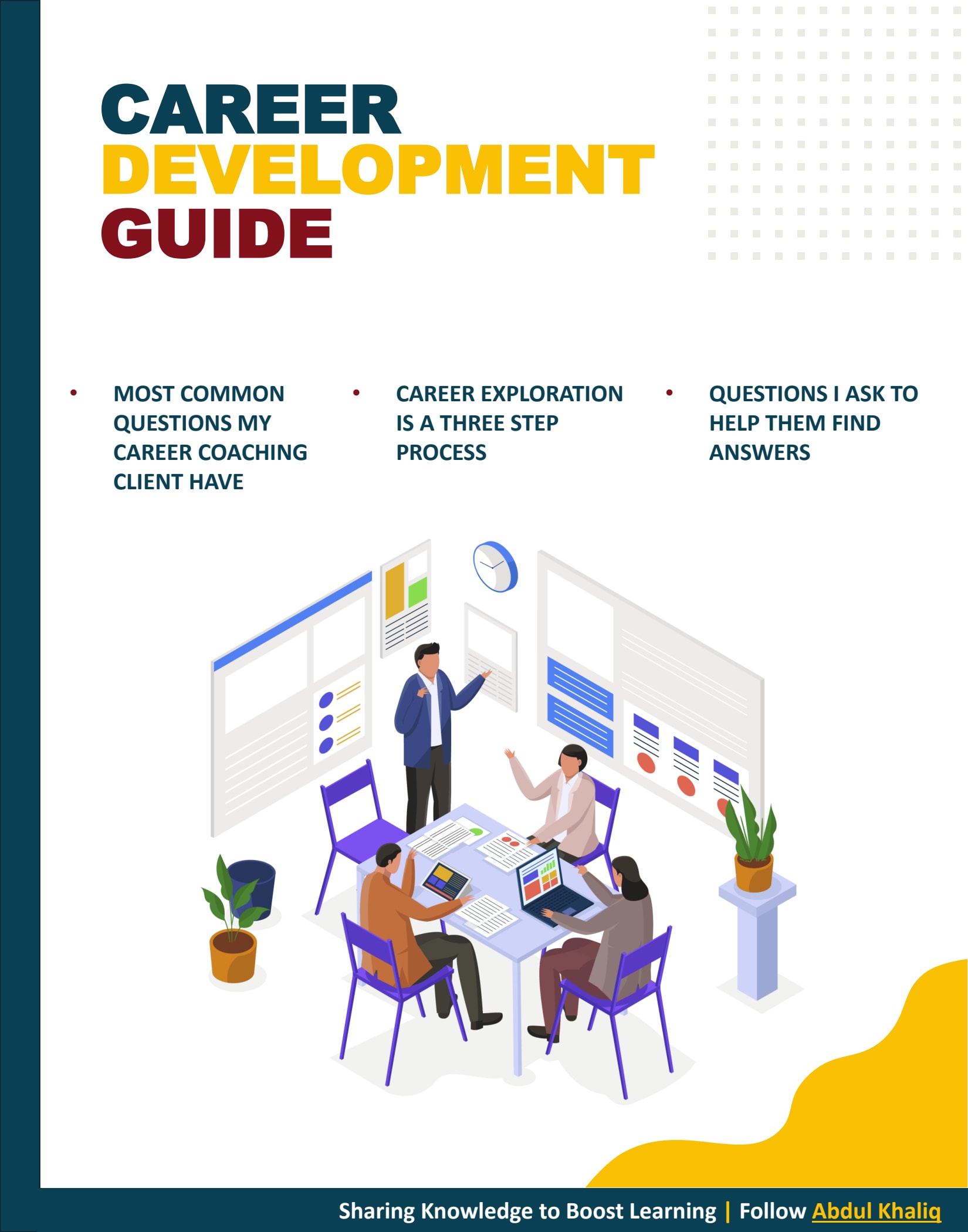 ZVENIA Mining .09/10/2023
ZVENIA Mining .09/10/2023Only 38% have weekly one-on-one meetings.
Employees that have regular one-on-ones:
– Are 3x more engaged on the job (Source: Gallup)
They are the bestinvestment you can make in your employees.
I offer 5 tips each for managers and employees.
Steal my guide for INCREDIBLE one-on-ones.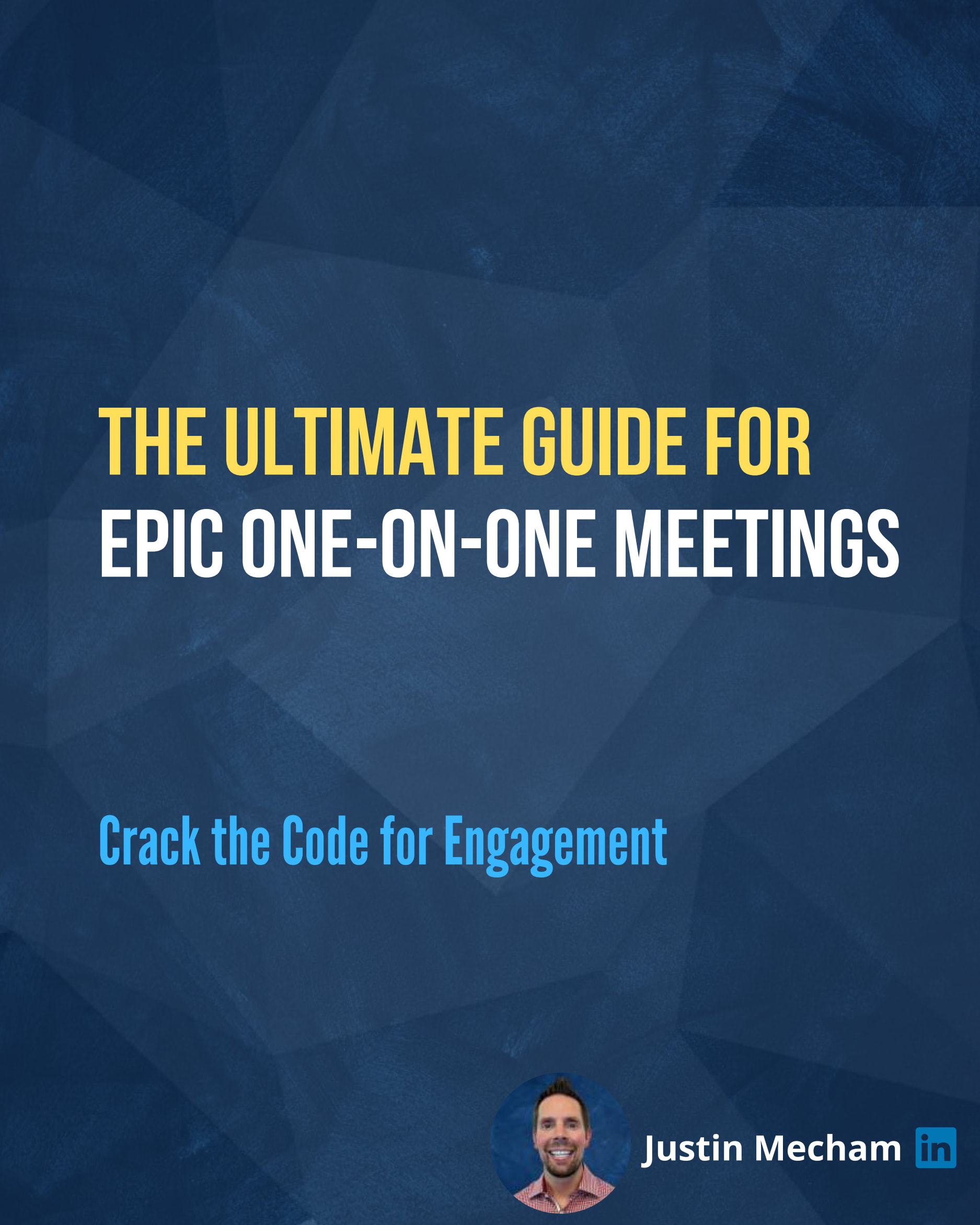 ZVENIA Mining .02/10/2023
ZVENIA Mining .02/10/2023Interviews are critical moments in our professional lives, providing opportunities to showcase our skills and experience.
To help you succeed in these crucial moments, I am sharing a comprehensive Interview Questions Guide.
Whether you’re a seasoned professional or just starting your career journey, this guide offers invaluable insights into common interview questions, effective strategies to tackle them, and tips to present your best self during these crucial conversations.
Let’s work together to help you land that dream job!
Source: Neha Malhotra, LinkedIn
PDF Credits : Clarkson University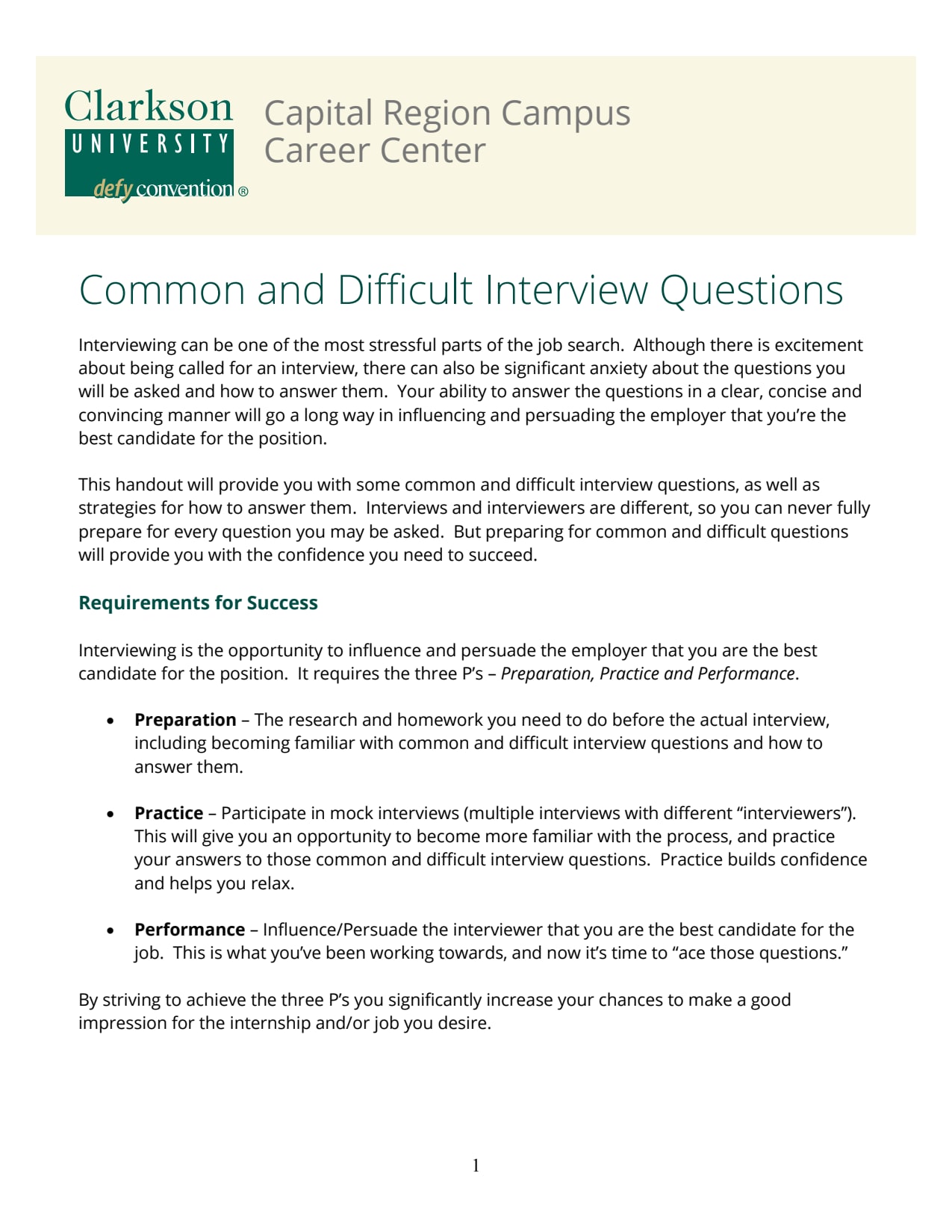 ZVENIA Mining .23/09/2023
ZVENIA Mining .23/09/2023“Para aumentar la productividad, se requieren trabajadores cualificados técnicamente y que sepan desenvolverse adecuadamente en sus funciones”
Estas nueve competencias transversales pueden y deberían ser incorporadas por cualquier trabajador o trabajadora del sector minero:
1) Razonamiento lógicomatemático
2) Creatividad e innovación
3) Pensamiento crítico
4) Análisis de datos
5) Juicio y toma de decisiones
6) Cambio climático
7) Economía Circular
8) Gestión Digital
9) Gestión Integrada de OperacionesSource: www.ccm.cl/modelo-competencias-transversales/
 ZVENIA Mining .05/08/2023
ZVENIA Mining .05/08/2023Along with other sectors of the global economy, mining faces significant change, and its approach to talent management will determine its future trajectory. Additional value can be unlocked through higher productivity and safety derived from a better managed, trained, and motivated workforce. Analytics have an exciting role to play here, from finding and keeping talent all the way to helping them do their best work.
There is an increasingly strong imperative to create best-in-class work environments, where people can feel valued, invested in, and fulfilled, and bring their best selves to work every day to deliver on the expectations of shareholders, policy makers, and society.
Source: McKinsey
www.mckinsey.com/industries/metals-and-mining/our-insights/has-mining-lost-its-luster-why-talent-is-moving-elsewhere-and-how-to-bring-them-back#/Simon Jowitt, LinkedIn
ZVENIA Mining .03/08/2023Did you know that 96% of the Problems are not seen by Senior Management???
Marcus Koehnlein reported „The concept was developed by Sidney Yoshida in 1989. He uncovered a poor distribution of power and information within the hierarchy. He found that company leadership was hardly aware of any of the real problems the organization faced. They were, as he put it, only aware of the tip of the iceberg.
If Yoshida’s numbers are still accurate today can be discussed, a lot changed since 1989, relevant is not the exact number but the model offers a powerful and painful insight into the miserable state of the modern workplace.
So what can be done? Frequently engaging with the front line seems to be a still underused key to success.“
How do you melt the Iceberg of Ignorance?
Credits Markus Koehnlein via Alvin Foo
ZVENIA Mining .25/07/2023Todavía veo en mis Consultorías y Entrenamientos Personalizados, mucha confusión y muchas maneras de calcular estos dos importantes KPIs en nuestras organizaciones.
Existen muchas definiciones de Rotación y Retención del Personal.
Te comparto las que se identifican con mi manera de pensar y actuar:💪¿Qué es la Rotación del Personal?
“la relación entre el número de miembros de la organización que se han ido durante el período que se considera, dividido por el número promedio de personas en esa organización durante el período” (Price, 1977) y a menudo es perjudicial para el funcionamiento eficaz de una organización.
Coincide con lo expresado en la nueva Norma ISO 30414/2018 sobre Reportes y Métricas en RRHH: (la norma internacional que trata de poner de acuerdo a todos a la hora de medir y hacer reportes en RRHH)
“Esta métrica expresa el número de personas que abandonan la organización debido al despido, el desgaste y otras razones en comparación con el número total de personas en la organización. Incluye toda la Rotación, independientemente de la razón”.💪¿Cómo se calcula?
Tasa de Rotación: (Número total de abandonos en un período de tiempo/Promedio de Empleados en el mismo período de tiempo) * 100💪¿Qué es la Retención del Personal?:
1. Es el esfuerzo realizado por las organizaciones para preservar su activo más preciado: los empleados.
2. Es el esfuerzo de las empresas para que sus empleados se aferren a la misma. Comienza con la contratación de personas y continúa después con las entrevistas de salidas
3. Es la capacidad de una organización para retener a sus empleados actuales.
4. Son las estrategias y procesos que desarrolla una organización para mantener a sus mejores talentos y mitigar el riesgo de rotación.💪¿Cómo se calcula?
He visto dos variantes predominantes:
1. ES LA MAS RECOMENDADA: No teniendo en cuenta los empleados que hayan sido contratados durante el año, ni en el total de empleados, ni en el número de abandonos. Solamente tiene en cuenta el Total de Empleados al Inicio del año y de ellos, cuántos se fueron por cualquier motivo
TRet ((TEmpIn-TTEmpbajas)/TEmpIn)*100
2. Considerándola como lo Opuesto de la Rotación del Personal (considera a los empleados que iniciaron y a los nuevos contratados)
TRetP=(1-(TEaba/PTEmp))*100
Ejemplo: Si la Rotación es del 15%, entonces la Retención es del 85%. SUMA 100Fuente: Juan Carlos Páez Núñez, LinkedIn
 Juan Carlos OSORIO22/07/2023
Juan Carlos OSORIO22/07/2023Cuando una compañía necesita cambiar a sus líderes, comenzamos por aquí:
1. Reflexionamos sobre los elementos críticos del liderazgo en esa compañía. En el ejemplo que os traigo se decidieron 4 elementos:
a) Toma de Decisiones
b) Comunicación
c) Desarrollo de Equipos
d) Colaboración2. Formulamos la mejor versión y su contraria. Por ejemplo, en comunicación pondríamos a la izquierda “confunde” y a la izquierda “clarifica”.
3. Una vez formulados los dos polos, decidimos en qué punto nos encontramos entre el 1 y el 5.
4. Esas puntuaciones nos las llevamos al diagrama de la tela de araña.
5. A la vista del resultado, establecemos las prioridades de cambio.
Si a este ejercicio añadimos una encuesta previa más unas entrevistas y unos focus group, conseguiremos una foto perfecta de cómo son los mánagers de nuestra compañía.
“It’s not Just EX. It’s HX.”
Source: Rafa Vivas – XPLANE, Linkedin
https://www.xplane.com.es/ZVENIA Mining .15/06/2023It’s hard being a CEO.
Every decision impacts financial health, employee morale, and stakeholder satisfaction.
To succeed, you’ll need a good CFO.
And you’ll need to Master Strategic Management.Here are 15 key areas that a CEO should focus on, to help you track your learning, your progress or your performance:
1. Vision and Strategy Development: map the future, ensure alignment with strategic vision, and develop long-term strategies to achieve goals
2,. Leadership and Organizational Culture: create a positive and productive organizational culture
3. Financial Management: oversee the company’s financial health
4. Corporate Governance: ensure adherence to the highest standards of governance
5. Risk Management: identify potential risks to the company and ensure it has systems in place to mitigate them
6. Operational Efficiency: streamline operations, improve productivity, and promote innovation
7. Talent Management: ensure the right people are in the right roles to effectively drive the strategic plan
8. Customer Focus: foster a customer-centric approach across all department, to understand and meet customer needs
9. Investor Relations: maintain strong relationships with investors, shareholders, and financial analysts
10. Brand Reputation and Image: act as the face of the company, and ensure their actions reflect positively on the brand
11. Innovation and Technology: foster a culture of innovation to gain and retain competitive advantages
12. Sustainability and Corporate Social Responsibility: balance the drive for profit with the need for ethical and sustainable operations
13. Stakeholder Management: manage relationships with various stakeholders
14. Mergers and Acquisitions: evaluate opportunities for growth via mergers, acquisitions, partnerships, or joint ventures, and oversee their successful execution.
15. Business Continuity and Succession Planning: develop and implement a comprehensive business continuity plan
Source article & image: Oana Labes, MBA, CPA ; LinkedIn
ZVENIA Mining .11/06/2023El feedback, o retroalimentación en español, es esencial en muchos aspectos de la vida, incluyendo en el ámbito laboral, educativo y personal. Algunas de las razones por las que el feedback es importante son las siguientes:
Mejora el rendimiento: Cuando recibimos feedback sobre nuestro trabajo o acciones, podemos aprender de nuestros errores y mejorar nuestro rendimiento en el futuro.
📌Fomenta el crecimiento y el desarrollo personal: El feedback constructivo puede ayudarnos a identificar áreas en las que podemos mejorar y a desarrollar nuevas habilidades y competencias.
📌Fortalece las relaciones interpersonales: Al recibir feedback de los demás y compartir nuestras propias opiniones y observaciones, podemos establecer relaciones más sólidas y de confianza.
📌Promueve la comunicación abierta y efectiva: El feedback es una herramienta importante para la comunicación efectiva y abierta entre las personas. Al proporcionar retroalimentación constructiva, podemos mejorar la calidad de nuestras interacciones y relaciones.
📌Fomenta la motivación y el compromiso: El feedback positivo puede ser muy motivador y ayudarnos a mantenernos comprometidos y enfocados en nuestros objetivos y metas.
En resumen, el feedback es importante porque nos ayuda a crecer y desarrollarnos, a fortalecer nuestras relaciones interpersonales, a mejorar nuestra comunicación y a mantenernos motivados y comprometidos en nuestras tareas y metas.
Source: EXPERTOS en Competencias y Conductas
ZVENIA Mining .11/06/2023Un líder es inspirador
Un jefe necesita la CohersiónUn líder es mentor
Un jefe es mandónUn líder ayuda a su equipo
Un jefe no tiene equipo sólo tiene personas que trabajan con él.Source: Lyz Escalante Fernandez, Linkedin
ZVENIA Mining .11/06/2023Existen varias razones por las cuales un colaborador podría decidir renunciar a una empresa. A continuación, te mencionaré algunas de las razones más comunes:
📌Falta de satisfacción laboral: Si un colaborador no se siente satisfecho con su trabajo, puede decidir buscar nuevas oportunidades que le brinden mayor satisfacción. Esto puede deberse a la falta de reconocimiento, ausencia de retos profesionales, falta de desarrollo profesional o insatisfacción con la cultura de la empresa.
📌Mejores oportunidades: Un colaborador puede recibir una oferta de empleo más atractiva en otra empresa, ya sea en términos de salario, beneficios, posición o crecimiento profesional. Esta puede ser una motivación significativa para renunciar y buscar una nueva oportunidad que se ajuste mejor a sus metas y aspiraciones.
📌Problemas con el liderazgo: Si un colaborador tiene conflictos con su jefe directo o no está satisfecho con la forma en que se maneja el liderazgo en la empresa, es posible que decida renunciar. Una mala relación con el jefe, falta de comunicación efectiva o un estilo de gestión inadecuado pueden generar un ambiente laboral poco favorable y llevar a la decisión de renuncia.
📌Falta de equilibrio entre trabajo y vida personal: Si un colaborador siente que su trabajo está afectando negativamente su vida personal, ya sea debido a largas horas de trabajo, falta de flexibilidad horaria o presiones constantes, puede optar por renunciar en busca de un mejor equilibrio entre su vida profesional y personal.
📌Cambio en la trayectoria profesional: Las metas y los intereses profesionales de una persona pueden evolucionar con el tiempo. Si un colaborador encuentra que su trabajo actual ya no se alinea con sus objetivos a largo plazo o con su pasión, es posible que decida buscar nuevas oportunidades en un campo diferente o en una industria que le resulte más atractiva.
📌Problemas en el ambiente laboral: Un ambiente laboral tóxico, con conflictos constantes entre compañeros, falta de colaboración o discriminación pueden llevar a un colaborador a renunciar. El bienestar emocional y la salud mental son aspectos importantes en la vida de una persona, y si la empresa no brinda un ambiente positivo, algunos colaboradores pueden decidir buscar alternativas más saludables.
Source : EXPERTOS en Competencias y Conductas, LinkedIn
ZVENIA Mining .26/05/2023Scare yourself. If you regularly have meetings with foreign partners, it happens that out of an hour of exchanges, there are 5, 10, 15 minutes, or even more, where communication is impaired due to some misunderstandings or complete misunderstandings (technical issues, loss of attention, unclear explanations, differences in language levels, accents and pronunciation, etc.).
Now, calculate how many such meetings you attend per month, then per year, and add up all those critical moments where there is no discussion of the content and you will realize the colossal loss of information they represent.
It is not possible to completely eradicate these disruptions. But they can be reduced. How? When I ask what they do to deal with them, participants in cross-cultural training very generally say the same thing: simplify expression, slow down the flow, repeat, rephrase, and then write up the minutes of the meeting.
This is very useful, but often not enough. One then turns to the many articles devoted to the challenges of intercultural communication. But we are often frustrated by the advice given. We are told that we should not assume that our partners have the same references and habits in terms of communication, that we should be « kind », « listening », « open and respectful », « show empathy ». These are useful but very general postures that remind us of the abstract advice of personal development (Be yourself! Enjoy every moment!). The question remains: what can we actually do?
I propose a non-exhaustive list of actions to implement (in blue below). Some of them come from personal observations and practices; others have been mentioned by participants in intercultural trainings (I will mention it if the case). It is up to each of you to take what you from this toolb…
—
Source: https://gestion-des-risques-interculturels.com/analyses/intercultural-meetings-10-good-practices-to-reduce-misunderstandings/Crédit photo Jason Goodman, image gratuite Unsplash.
- Item 2
25 HR and organization
Add Z-NOTEZ-NOTES is a private space. The content written here will be visible only to you.
- Item 2
25 HR and organization
Add Z-EVENTZ-EVENTS is a public space. Events posted here will be visible to the ZVENIA community.
- Item 2
25 HR and organization
In this module you will have access to the following topics (not exhaustive) :
– Social plan
– Contracts
– Trial period
– Unions
– Bonds
– Evaluation of annual objectives
– Mobility
– Contribution (social, health, retirement)





















